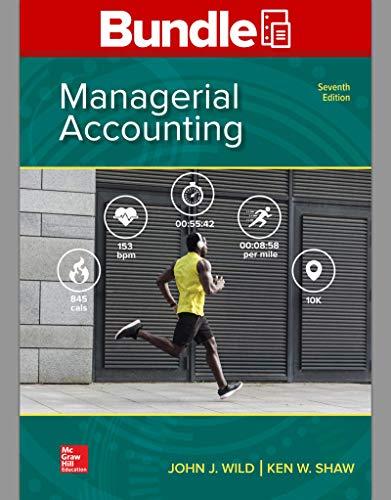
Concept introduction:
Present Value:
Present value of money means the present or current value of a future
Future Value:
The future value is the value of present cash flow at specified time period and at specified
Requirement 1:
We have to determine the interest rate column and number of period row while estimating future value.
Answer to Problem 1QS
The interest rate column we will refer is 12% and year row will be of 2 years.
Explanation of Solution
Since the rate of interest is 12% annually and time period is 2 years. Therefore the interest rate column will be of 12% and time period row will be of 2 years.
Concept introduction:
Present Value:
Present value of money means the present or current value of a future cash flow at a given rate of interest or return.
Future Value:
The future value is the value of present cash flow at specified time period and at specified rate of return.
Requirement 2:
We have to determine the interest rate column and number of period row while estimating future value.
Answer to Problem 1QS
The interest rate column we will refer is 3% and year row will be of 4 years.
Explanation of Solution
Since the rate of interest is 6% annual rate, compounded semi annually and time period is 2 years. Therefore the interest rate column will be of 3% (6%/2) and time period row will be of 4(2*2) years.
Concept introduction:
Present Value:
Present value of money means the present or current value of a future cash flow at a given rate of interest or return.
Future Value:
The future value is the value of present cash flow at specified time period and at specified rate of return.
Requirement 3:
We have to determine the interest rate column and number of period row while estimating future value.
Answer to Problem 1QS
The interest rate column we will refer is 2% and year row will be of 8 years.
Explanation of Solution
Since the rate of interest is 8% annual rate, compounded quarterly and time period is 2 years. Therefore the interest rate column will be of 2% (8%/4) and time period row will be of 8(2*4) years.
Concept introduction:
Present Value:
Present value of money means the present or current value of a future cash flow at a given rate of interest or return.
Future Value:
The future value is the value of present cash flow at specified time period and at specified rate of return.
Requirement 4:
We have to determine the interest rate column and number of period row while estimating future value.
Answer to Problem 1QS
The interest rate column we will refer is 1% and year row is not shown in table B.2
Explanation of Solution
Since the rate of interest is 12% annual rate, compounded monthly and time period is 2 years. Therefore the interest rate column will be of 1% (12%/12) and time period row will be of 24(2*12) years but it is not shown in table B.2
Want to see more full solutions like this?
Chapter B Solutions
Managerial Accounting + Connect Access Card
- Pedro Manufacturing expects overhead costs of $360,000 per year and direct production costs of $15 per unit. The estimated production activity for the 2023 accounting period is as follows: 1st 2nd 3rd 4th Quarter Units Produced 10,000 9,500 8,000 10,500| The predetermined overhead rate based on units produced is (rounded to the nearest penny): a. $9.47 per unit b. $10.00 per unit c. $8.05 per unit d. $11.25 per unitarrow_forwardPlease provide the answer to this general accounting question with proper steps.arrow_forwardCan you solve this general accounting question with accurate accounting calculations?arrow_forward
- On March 1, 20X1, your company,which uses Units-of-Production (UOP) Depreciation, purchases a machine for $300,000.arrow_forwardPlease provide the accurate answer to this general accounting problem using valid techniques.arrow_forwardI am searching for the right answer to this financial accounting question using proper techniques.arrow_forward
 College Accounting, Chapters 1-27AccountingISBN:9781337794756Author:HEINTZ, James A.Publisher:Cengage Learning,
College Accounting, Chapters 1-27AccountingISBN:9781337794756Author:HEINTZ, James A.Publisher:Cengage Learning, Financial Accounting: The Impact on Decision Make...AccountingISBN:9781305654174Author:Gary A. Porter, Curtis L. NortonPublisher:Cengage Learning
Financial Accounting: The Impact on Decision Make...AccountingISBN:9781305654174Author:Gary A. Porter, Curtis L. NortonPublisher:Cengage Learning

